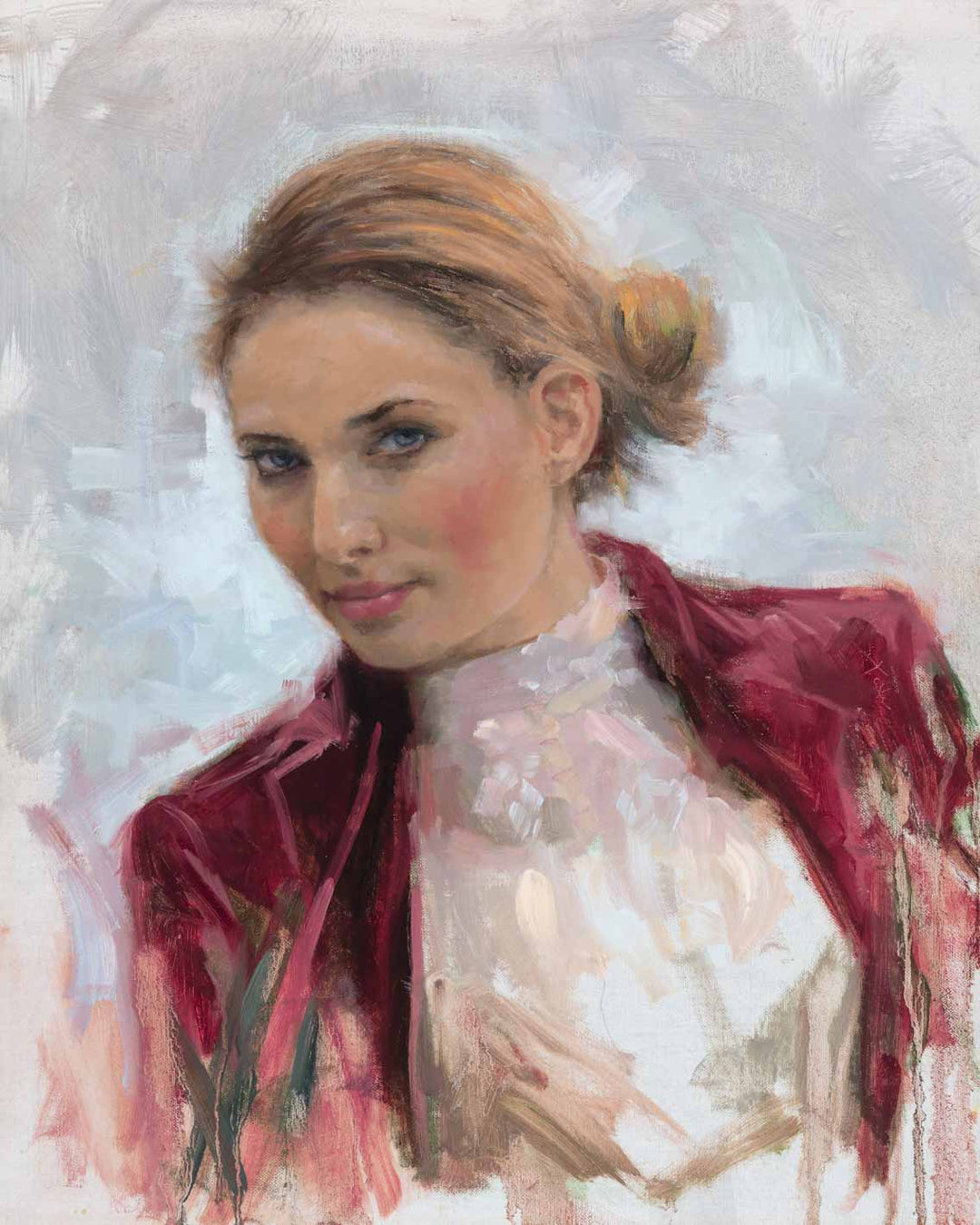Checking out All Regarding Oil Paintings: A Guide to Understanding Their Beauty and Worth
Oil paintings have mesmerized audiences for centuries, using a glance right into the creative mastery of various periods. Their rich history is intertwined with innovative strategies and extensive emotional expression. Comprehending the products and techniques behind these art work can enhance gratitude. Furthermore, the marketplace for oil paints provides opportunities for enthusiasts and financiers alike. As one discovers this fascinating world, the concern emerges: what makes an oil painting really beneficial?
The Background of Oil Paint: A Journey With Time
Oil painting has roots that date back to ancient times, it truly grew during the Renaissance, when musicians discovered its versatility and rich shade capacity. Early instances can be mapped to the 7th century, with methods advancing significantly across cultures. The tool came to be noticeable in Northern Europe in the 15th century, especially through the works of artists like Jan van Eyck, that originated its use for detailed realistic look and lively tones. This period marked a separation from tempera paints, enabling higher deepness and appearance. As oil painting spread, it influenced plenty of artists, leading to work of arts by renowned figures such as Leonardo da Vinci and Rembrandt. The tool's heritage proceeds, forming the art globe well into contemporary times.
Understanding Oil Paints: Products and Techniques
As artists discover the world of oil paints, they experience a diverse selection of materials and techniques that define this medium. The primary parts of oil paint consist of pigments, which give shade, and drying out oils, such as linseed, that bind the pigments and facilitate application. Different additives can modify the paint's structure and drying time, enhancing flexibility. Techniques like glazing, where clear layers are constructed up, and impasto, which involves using thick paint, enable various aesthetic impacts. In addition, the usage of brushes, palette knives, and even fingers can create distinct structures and finishes. Understanding these strategies and materials makes it possible for musicians to completely share their creativity and attain the preferred impact in their artwork.
The Duty of Shade in Oil Paintings
Color plays a pivotal duty in oil paints, influencing both aesthetic appeal and psychological vibration. Understanding color concept essentials, including the connections in between colors, can improve an artist's ability to share mood and atmosphere. Furthermore, grasping shade blending techniques permits for higher deepness and splendor in a painting's scheme.

Color Theory Fundamentals
Comprehending shade theory is crucial for artists dealing with oil paints, as it creates the structure for producing visually appealing and unified structures. Color theory includes the study of how shades interact, the shade wheel, and the connections in between main, secondary, and tertiary shades. Artists make use of corresponding colors to improve contrasts and create focal points, while similar colors advertise unity and cohesiveness within an item. Additionally, the concepts of cozy and amazing colors influence the assumption of depth and space in a paint. Realizing these principles allows artists to control shade effectively, assisting the viewer's eye and interacting their desired message. Proficiency of color theory ultimately enriches an artist's capacity to convey feelings and ideas via their job.
Psychological Influence of Shade
The psychological influence of color in oil paintings plays a vital role in exactly how audiences connect and regard with art work. Shades evoke particular sensations and state of minds, influencing the audience's emotion. For example, warm colors like reds and oranges can produce a feeling of warmth and power, while awesome tones such as blues and eco-friendlies typically stimulate calmness or self-questioning. Artists tactically select color combinations to boost narrative aspects, leading the target market's emotional journey. The saturation and comparison of shades better amplify these results, attracting focus and developing focus. Eventually, the interaction of shades in oil paintings not just enhances their aesthetic appeal yet also works as a powerful medium for emotional expression, improving the audience's experience and interpretation.
Color Mixing Techniques
While several elements of oil painting add to the overall structure, mastering shade blending methods is necessary for attaining desired results and depth. Color mixing can be come close to through numerous approaches, consisting of the subtractive and additive procedures. Additive mixing entails incorporating colors of light, while subtractive mixing counts on pigments, where shades blend to create new tones. Artists usually make use of a limited palette to create unified jobs, understanding the partnerships in between main, additional, and tertiary shades. Strategies such as glazing and scumbling even more boost depth and luminosity. By skillfully mixing colors, an artist can evoke emotions, develop centerpieces, and achieve a sense of realistic look, ultimately raising the paint's visual and emotional influence.
Famous Oil Painters and Their Iconic Functions

Famous for their proficiency of color and method, oil painters have actually created some of the most popular artworks in history. Distinguished musicians like Vincent van Gogh captivated audiences with his stirring brushwork in "Starry Evening," while Claude Monet's "Impression, Dawn" prepared for Impressionism. Leonardo da Vinci's "Mona Lisa" remains an enduring sign of imaginative genius, showcasing his skill in catching human expression. Meanwhile, Rembrandt's "The Night Watch" shows his ingenious use light and darkness. Other noteworthy numbers consist of Pablo Picasso, that transformed modern art with his bold testing in works like "Les Demoiselles d'Avignon," and Georgia O'Keeffe, whose lively depictions of landscapes and flowers aided define American modernism. Each artist's distinct style contributed considerably to the oil paint landscape.
Exactly how to Assess the Quality of an Oil Paint
Reviewing the top quality of an oil painting involves a mindful evaluation of craftsmanship strategies, in addition to an analysis of shade and structure. Observing brushwork, layering, and the application of paint can reveal the musician's skill level. Furthermore, the interplay of shades and the general arrangement of aspects contribute considerably to the paint's aesthetic worth.
Examining Craftsmanship Strategies
A thorough evaluation of craftsmanship methods is vital for determining the high quality of an oil paint. Evaluators should initially examine the application of paint; thick, distinctive brushstrokes may suggest a competent hand, while extremely uniform applications could show a lack of depth. oil paintings for sale. The layering strategy is also essential; the presence of lusters and varied density can improve luminance and complexity. Furthermore, the top quality of the materials utilized, such as the canvas and pigments, plays a significant function in durability and general visual. Focus to detail in elements like sides and shifts in between shades mirrors the musician's commitment to their craft. Eventually, these strategies add to the painting's psychological impact and market price, acting as indications of the artist's skill and intent
Assessing Color and Structure
While evaluating the high quality of an oil paint, one should concentrate on the interplay of shade and make-up, as these elements are basic to the art work's overall influence. Color selections can develop and evoke emotions state of mind; therefore, the artist's scheme should be analyzed for consistency click here and comparison. A well-balanced structure routes the viewer's eye and creates a feeling of unity. Musicians often utilize methods like the regulation of thirds or leading lines to enhance aesthetic rate of interest. In addition, using light and shadow can add depth, improving the three-dimensionality of the paint. Inevitably, an effective oil paint marries color and composition, involving the visitor and welcoming a deeper gratitude of the artist's vision and strategy.
Taking care of and Preserving Oil Paintings
Appropriate care and preservation of oil paints is necessary for preserving their stability and longevity. To protect these artworks, it is important to display them far from straight sunlight, which can cause fading and discoloration. Maintaining a secure setting with controlled temperature and moisture more aids in avoiding damage. Cleansing ought to be done gently making use of a soft, dry cloth, staying clear of any type of extreme chemicals that might harm the paint or varnish. Normal assessments for signs of deterioration, such as fracturing or flaking, are recommended. When transporting or saving oil paintings, correct cushioning and framework are required to stay clear of physical damage. Inevitably, persistent treatment adds to the aesthetic appeal and worth of oil paints in time.
The Marketplace for Oil Paintings: Investing and accumulating
Understanding the marketplace characteristics for oil paintings is important for investors and collection agencies alike. The worth of these artworks is influenced by numerous factors, including the musician's online reputation, historical relevance, and existing trends. Collection agencies often seek pieces that resonate directly while considering potential recognition in value. Galleries and auctions function as key locations for buying and marketing, with rates varying based upon demand and rarity. Buying oil paints requires study right into the market, along with an understanding of credibility and provenance. Furthermore, arising artists may supply opportunities for considerable returns, while developed names can command high costs. On the whole, a tactical strategy to collecting can produce both visual satisfaction and financial benefits.

Frequently Asked Inquiries
What Are the Ecological Impacts of Oil Paint Materials?
The ecological impacts of oil paint materials consist of the launch of volatile natural compounds (VOCs), dangerous waste generation, and resource removal for pigments. These factors add to pollution and eco-friendly degradation, increasing concerns amongst eco mindful musicians and consumers.
Exactly How Do Different Canvases Impact Oil Paint Results?
Various canvases affect oil painting results significantly. Texture, absorbency, and surface high quality can change paint application, drying times, and color vibrancy. Artists typically choose details canvases to attain wanted effects and improve their creative expression.
Can Oil Paintings Be Restored if Damaged?
Oil paints can without a doubt be recovered if harmed. Expert conservators utilize numerous strategies to repair tears, tidy surface areas, and address discoloration, guaranteeing that the art work retains its initial appeal and value for future generations.
What Are the Indicators of an Original Oil Painting?
The indicators of an original oil paint include visible brush strokes, appearance variations, and an irregular canvas weave (oil paintings for sale). Furthermore, authenticity might be confirmed via provenance, trademarks, and the existence of a varnish layer unique to oil tools
Exactly How Has Modern Technology Influenced Modern Oil Paint Techniques?
Modern technology has actually considerably affected contemporary oil paint methods by introducing digital tools for planning, enhanced products for texture and long life, and on the internet systems for marketing and sharing art, thus expanding artists' imaginative possibilities and target market reach. Oil paint has roots that date back to old times, it truly grew during the Renaissance, when artists uncovered its flexibility and abundant color capacity. The emotional effect of shade in oil paintings plays an essential function in just how audiences regard and connect with artwork. While numerous elements of oil paint contribute to the general make-up, understanding color mixing methods is important for accomplishing wanted effects and depth. Reviewing the quality of an oil paint includes a mindful evaluation of workmanship methods, as well as an evaluation of color and composition. While reviewing the high quality of an oil paint, one need to focus on the interaction of shade and structure, as these components are basic to the art work's total influence.
 Lark Voorhies Then & Now!
Lark Voorhies Then & Now! Jurnee Smollett Then & Now!
Jurnee Smollett Then & Now! Barbi Benton Then & Now!
Barbi Benton Then & Now! Phoebe Cates Then & Now!
Phoebe Cates Then & Now! Lynda Carter Then & Now!
Lynda Carter Then & Now!